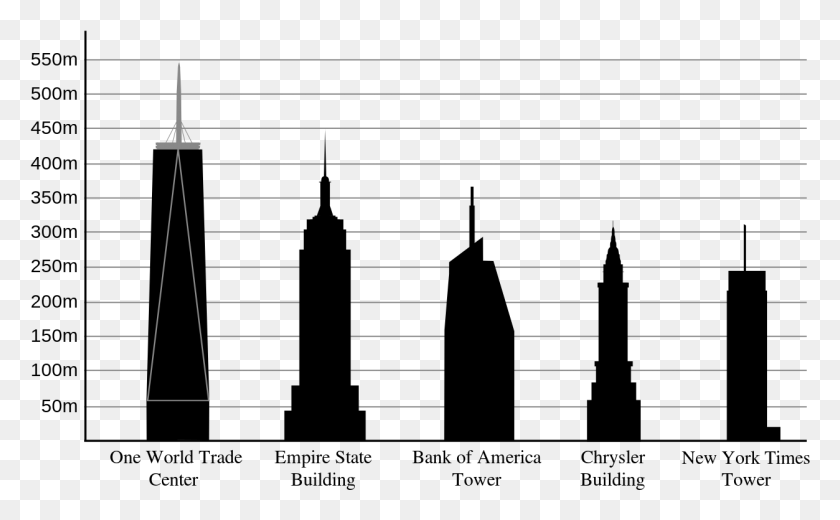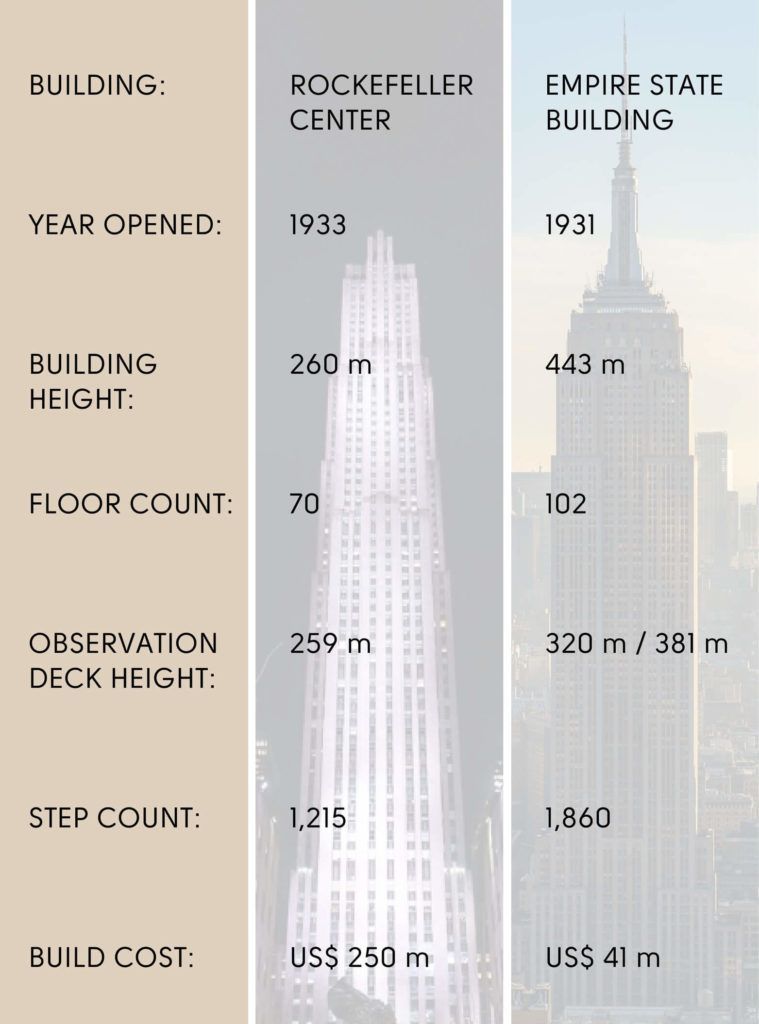The Empire State Building, one of the most iconic skyscrapers in the world, stands as a testament to human ingenuity and architectural excellence. Its towering height in meters is a topic of fascination for millions of visitors and architecture enthusiasts globally. Located in the heart of Manhattan, New York City, this building continues to captivate people with its grandeur and historical significance. In this article, we will delve into the height of the Empire State Building in meters, explore its architectural features, and understand why it remains a symbol of innovation.
Since its completion in 1931, the Empire State Building has been a landmark that defines the New York City skyline. Standing at a remarkable height, it was once the tallest building in the world. The structure's height in meters has been a subject of curiosity for many, and understanding its dimensions provides insight into its engineering marvel.
This article aims to provide an in-depth analysis of the Empire State Building's height in meters, its construction history, architectural design, and its enduring legacy. Whether you're a tourist planning a visit or an architecture enthusiast eager to learn more, this guide will cover everything you need to know about the iconic skyscraper.
Read also:Nishas The Ultimate Guide To Understanding This Rising Star
Table of Contents
- Introduction
- Height of Empire State Building Meters
- Construction History
- Architectural Design
- Materials Used in Construction
- Structural Details and Engineering
- Landmark Status and Recognition
- Facts and Figures
- Visitor Experience
- Modern Significance and Impact
- Conclusion
Height of Empire State Building Meters
Understanding the Building's Dimensions
The Empire State Building's height in meters is a defining characteristic that sets it apart from other skyscrapers. The building stands at an impressive 381 meters (1,250 feet) to the top of its structural roof. However, when including the antenna spire, the total height increases to 443.2 meters (1,454 feet).
This distinction is crucial when discussing the building's height. The structural height refers to the building without the antenna, while the total height includes the spire, which was added later to accommodate broadcasting equipment. Understanding these measurements provides a clearer picture of the building's scale.
For comparison, the Empire State Building remains one of the tallest buildings in New York City, although it has been surpassed by newer skyscrapers like One World Trade Center. However, its historical significance and iconic status ensure its place in architectural history.
Construction History
The Journey of Building an Icon
The construction of the Empire State Building began in 1930 during the Great Depression. Despite economic challenges, the project moved forward with remarkable speed. The building was completed in just 410 days, a testament to the dedication and skill of the workforce.
Key milestones in the construction process include:
- Groundbreaking on January 22, 1930
- Steel framework erected at a rate of four and a half floors per week
- Completion of the structural work by late May 1931
The building officially opened on May 1, 1931, with President Herbert Hoover pressing a button in Washington, D.C., to light up the building for the first time.
Read also:Discover The Iconic Key West Dollar Bill Bar A Unique Experience In Paradise
Architectural Design
A Masterpiece of Art Deco Style
The Empire State Building's architectural design is a prime example of the Art Deco style, characterized by its sleek lines, geometric patterns, and ornamental details. Designed by the architectural firm Shreve, Lamb & Harmon, the building's design was influenced by the industrial age and the machine aesthetic.
Key features of the design include:
- A stepped profile that gives the illusion of height
- Chrome-nickel steel accents that enhance its visual appeal
- Windows arranged in a grid pattern to maximize natural light
The building's design not only serves an aesthetic purpose but also contributes to its structural integrity and functionality.
Materials Used in Construction
The Backbone of an Iconic Structure
The construction of the Empire State Building utilized a variety of materials, each chosen for its strength, durability, and availability. The primary materials include:
- Steel for the framework
- Indiana limestone and granite for the exterior
- Concrete for the floors and core
These materials were selected not only for their structural properties but also for their ability to withstand the test of time. The use of high-quality materials ensures the building's longevity and safety.
Structural Details and Engineering
Innovative Engineering Solutions
The structural details of the Empire State Building reflect groundbreaking engineering techniques for its time. The building's steel framework, designed to withstand high winds and seismic activity, is a marvel of engineering innovation.
Key structural details include:
- A rigid steel skeleton that provides stability
- Reinforced concrete floors that enhance load-bearing capacity
- An antenna spire that serves both functional and aesthetic purposes
The engineering behind the Empire State Building has inspired countless architects and engineers worldwide, setting new standards for skyscraper construction.
Landmark Status and Recognition
A Global Icon
The Empire State Building has achieved landmark status both nationally and internationally. Recognized as a National Historic Landmark in 1986, the building is also listed on the UNESCO World Heritage List as part of the New York City skyline.
Its cultural significance extends beyond architecture, appearing in numerous films, television shows, and literary works. The building has become synonymous with New York City and is often used as a symbol of American ambition and innovation.
Facts and Figures
Key Statistics About the Empire State Building
Here are some fascinating facts and figures about the Empire State Building:
- Height: 381 meters (1,250 feet) to the roof; 443.2 meters (1,454 feet) including the antenna
- Floors: 102 floors
- Construction time: 410 days
- Number of workers: Approximately 3,400
- Weight: Over 365,000 tons
These statistics highlight the scale and complexity of the building, making it a remarkable achievement in architectural history.
Visitor Experience
Exploring the Iconic Skyscraper
Visitors to the Empire State Building can enjoy breathtaking views of New York City from its observation decks. The 86th-floor deck offers stunning panoramic views, while the 102nd-floor deck provides an even higher vantage point.
Key features of the visitor experience include:
- Interactive exhibits showcasing the building's history
- LED lighting displays that illuminate the building at night
- Guided tours that provide insights into the building's design and construction
The Empire State Building is a must-visit destination for anyone traveling to New York City, offering a unique perspective on the city's vibrant landscape.
Modern Significance and Impact
Continuing Relevance in the 21st Century
In the modern era, the Empire State Building remains a symbol of architectural innovation and sustainability. Recent renovations have focused on improving energy efficiency, reducing the building's carbon footprint, and enhancing its environmental performance.
Key initiatives include:
- Installation of energy-efficient windows
- Upgrading HVAC systems to reduce energy consumption
- Implementing green building practices to achieve LEED certification
These efforts ensure the Empire State Building continues to be a leader in sustainable architecture, setting an example for future skyscrapers.
Conclusion
The Empire State Building's height in meters, along with its architectural brilliance and historical significance, makes it one of the most iconic structures in the world. From its construction during the Great Depression to its modern-day renovations, the building has consistently pushed the boundaries of innovation and design.
We encourage readers to visit the Empire State Building and experience its grandeur firsthand. Share your thoughts and experiences in the comments below, and don't forget to explore other fascinating articles on our website. Together, let's celebrate the enduring legacy of this architectural masterpiece!
References:
- Empire State Building Official Website
- National Park Service - National Historic Landmarks Program
- Architectural Digest - Empire State Building


